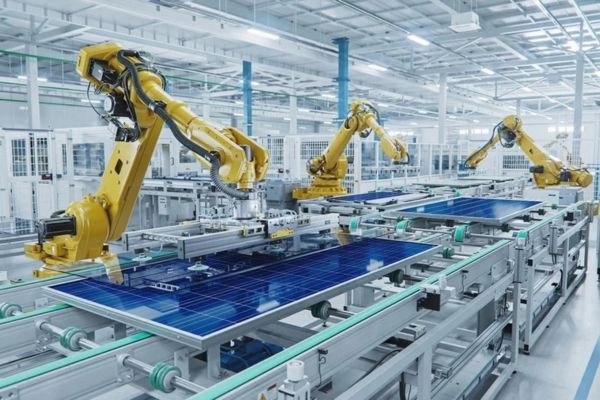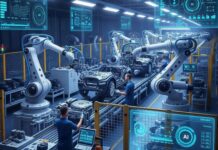Industrial automation has undergone a paradigm shift with the advent of Industry 4.0, the era defined by smart factories, cyber-physical systems, and data-driven operations. Industry 4.0 integrates advanced technologies such as the Internet of Things (IoT), Artificial Intelligence (AI), and robotics into manufacturing and production processes, enabling unprecedented levels of efficiency, precision, and adaptability. Consegic Business Intelligence analyzes that industrial automation market size is estimated to reach over USD 427.42 Billion by 2031 from a value of USD 205.63 Billion in 2023 and is projected to grow by USD 221.66 Billion in 2024, growing at a CAGR of 9.6% from 2024 to 2031. This article explores the key facets of industrial automation in the Industry 4.0 landscape, providing insights into its transformative impact and technical innovations.
Smart Factories and Interconnected Systems
Industry 4.0 emphasizes interconnected systems where machines, sensors, and software communicate seamlessly to enhance productivity and decision-making. Industrial automation now leverages IoT devices to collect real-time data from equipment and processes. These devices enable predictive analytics, allowing for proactive maintenance and reducing unplanned downtime. For example, smart sensors monitor parameters such as temperature, pressure, and vibration, sending alerts before a failure occurs. To handle vast data volumes efficiently, automation systems use edge computing, which processes data locally at the source. This reduces latency, enhances response times, and ensures continuity even when cloud connectivity is interrupted.
Advanced Robotics and Collaborative Systems
Robotics is at the forefront of Industry 4.0, with innovations making them more intelligent, adaptable, and collaborative. Collaborative robots, or cobots, are designed to work alongside humans safely. They are equipped with sensors and AI algorithms that allow them to adapt to dynamic work environments, perform precision tasks, and learn from interactions. Cobots reduce the physical strain on workers and improve overall productivity. Unlike traditional robots, AMRs use advanced navigation systems and real-time mapping to operate without fixed pathways. In warehouses and factories, AMRs are transforming logistics and inventory management by autonomously transporting goods and optimizing workflows.
AI and Machine Learning in Automation
Artificial Intelligence and Machine Learning (ML) play a pivotal role in driving smart automation, enabling systems to learn, adapt, and make decisions. AI-powered systems analyze production data to identify inefficiencies and recommend optimizations. For example, AI algorithms can adjust machine parameters in real time to maintain consistent output quality, even when raw material properties vary. Traditional quality control methods are being replaced by AI-enabled vision systems that detect minute defects in products with incredible accuracy. These systems improve inspection speed and accuracy, reducing waste and enhancing customer satisfaction.
Cybersecurity in Industrial Automation
The rise of interconnected systems also brings cybersecurity challenges, as vulnerabilities in industrial networks can disrupt operations. Automation systems are now equipped with robust security protocols, including firewalls, intrusion detection systems (IDS), and anomaly detection algorithms. These measures protect critical infrastructure from cyber threats. Blockchain technology is being explored for secure data exchanges in industrial environments, ensuring tamper-proof transaction records and enhancing trust between stakeholders.
Data-Driven Decision Making
Data is the backbone of Industry 4.0, and automation systems are increasingly leveraging advanced analytics for strategic decision-making. Digital twins, virtual replicas of physical assets, allow manufacturers to simulate operations and test changes without disrupting actual production. This enhances efficiency and reduces costs by identifying potential issues before implementation. Big data tools process and analyze massive datasets generated by automated systems. These insights help manufacturers optimize supply chains, forecast demand, and improve overall operational efficiency.
Conclusion
Industrial automation in the era of Industry 4.0 is redefining the manufacturing landscape, blending advanced technologies with traditional processes to create smart, adaptive, and efficient systems. The integration of IoT, AI, robotics, and data analytics has not only enhanced productivity but also opened avenues for innovation and sustainability. As industries continue to embrace these advancements, the future of automation promises to deliver unparalleled benefits, making it a cornerstone of modern manufacturing.
Source: Industrial Automation Market
















